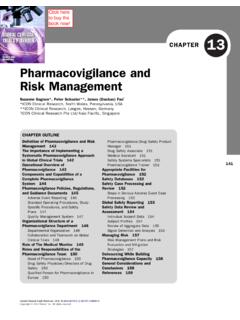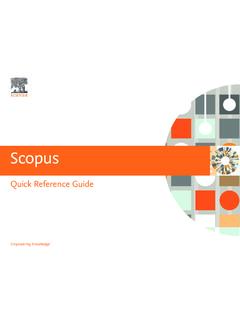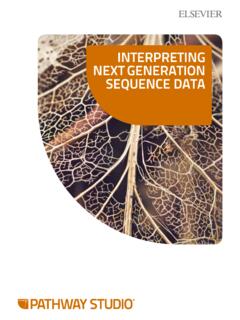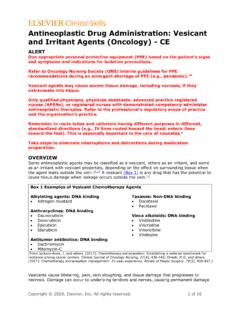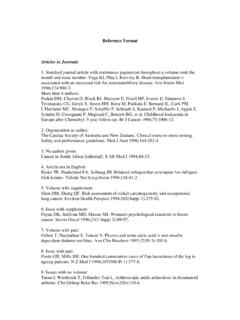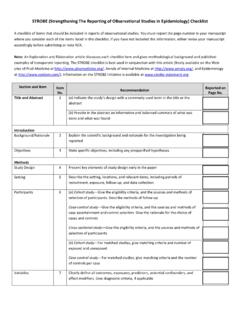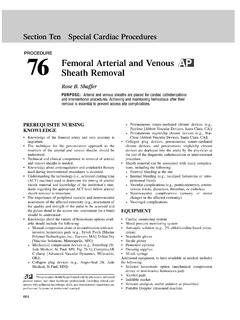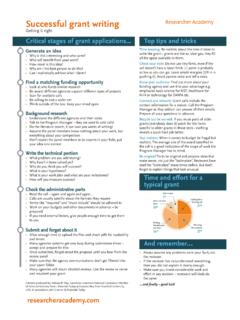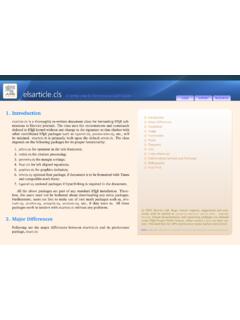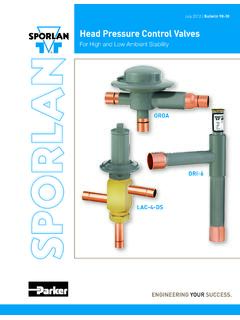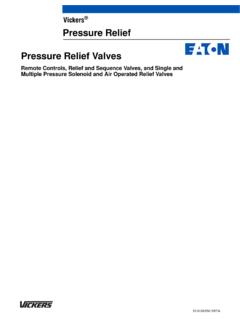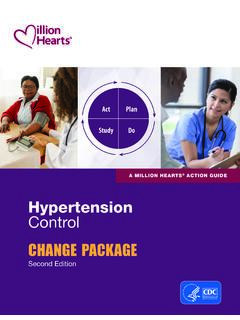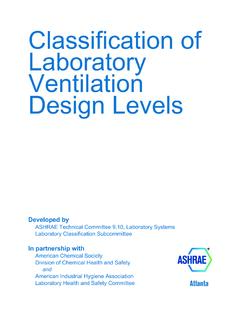Transcription of Mechanical Ventilation: Pressure-Regulated Volume …
1 Mechanical ventilation : Pressure-Regulated Volume control ventilation (Respiratory Therapy) Copyright 2020, Elsevier, Inc. All rights reserved. 1 of 4 OVERVIEW Pressure-Regulated Volume control (PRVC) ventilation is a mode of Mechanical ventilation that combines Volume and pressure control ventilation . It is considered a dual mode of ventilation that uses a decelerating waveform. PRVC is an appropriate mode of ventilation for patients who require a specific tidal Volume (VT) with the lowest effective pressure , such as those with acute respiratory distress syndrome (ARDS). In the PRVC mode, the ventilator delivers a Volume -controlled breath. Using the plateau pressure from the previous delivered breath, the ventilator delivers the next breath.
2 This allows the lowest delivery pressure , which is the target VT. PRVC is an adaptive control form of ventilation that allows automatic adjustment of targets ( pressure versus Volume ) over several breaths to maintain a selected target; in this case, Volume is In this manner, the PRVC mode may help prevent volutrauma and barotrauma by limiting the delivery pressure to 5 cm H2O below the set upper pressure limit PRVC adjusts flow rates to meet demand when lung compliance changes; VT is kept constant, resulting in a more normalized breathing pattern. PRVC may be used in infants with ARDS because the ventilator responds to changing lung compliance and decreases the incidence of air leaks that are common in this age group.
3 If lung compliance decreases or airway resistance increases, the system flow increases. If lung compliance increases or airway resistance decreases, the system flow decreases. PRVC provides the comfort of pressure ventilation for patients with reliable minute ventilation . A mandatory rate is also set for the patient. All breaths are patient triggered or time triggered. The ventilator compares Volume and pressure values from the previous breath and increases or decreases pressure levels according to tidal or minute ventilation . The pressure level that is delivered is between the set positive end-expiratory pressure (PEEP) and the set upper pressure limit. If the measured Volume either increases or decreases above or below the settings, the pressure decreases or increases accordingly in small increments to a maximum determined by the type of ventilator.
4 The pressure available is set 5 cm H2O below1 the set upper pressure limit, and if this pressure is reached, the ventilator s alarm sounds and the ventilator delivers as much of the set Volume as possible. EDUCATION Provide developmentally and culturally appropriate education based on the desire for knowledge, readiness to learn, and overall neurologic and psychosocial state. Address the indications for PRVC, the potential hazards, and the expected outcomes with the patient and family. Encourage questions and answer them as they arise. ASSESSMENT AND PREPARATION Assessment 1. Perform hand hygiene before patient contact. 2. Introduce yourself to the patient.
5 3. Verify the correct patient using two identifiers. Mechanical ventilation : Pressure-Regulated Volume control ventilation (Respiratory Therapy) Copyright 2020, Elsevier, Inc. All rights reserved. 2 of 4 4. Assess the patient for respiratory deterioration as evidenced by arterial blood gas (ABG) values, vital signs, level of consciousness, work of breathing, and underlying causes ( , apnea, impending respiratory failure). 5. Assess chest radiograph findings. Preparation 1. Before initiating Mechanical ventilation , check the system microprocessor or ventilation system. Perform a short self-test as appropriate. a. Verify compliance of the heat-moisture exchanger (HME), humidifier, and filters (if needed).
6 B. Document the completed ventilation system test. Include pass or fail, date, and initials or signature and credentials of the respiratory therapist (RT). 2. Verify the authorized practitioner s order for the initiation of Mechanical ventilation . PROCEDURE 1. Perform hand hygiene and don gloves. 2. Verify the correct patient using two identifiers. 3. Explain the procedure to the patient and ensure that the patient agrees to treatment. 4. Plug the Mechanical ventilator power cord into a red outlet and connect the high- pressure hose to the appropriate gas source. 5. Turn on the ventilator. 6. Select the appropriate patient designation ( , adult, pediatric, infant).
7 7. Select and enter either PRVC or Volume control plus (VC+) (depending on the software). 8. Set the desired minimum rate. 9. Set the desired target VT. 10. Set the desired fraction of inspired oxygen (FIO2) delivery. 11. Set the desired inspiratory time or inspiratory-to-expiratory (I:E) ratio. 12. Set the desired PEEP level. 13. Set the desired trigger sensitivity ( pressure or flow). 14. Set the upper pressure limit. 15. Set the appropriate alarms. 16. Set up the closed suction system. 17. Assess the patient s breath sounds, VT, peak inspiratory pressure (PIP), vital signs ( , heart rate and rhythm, blood pressure ), peripheral oxygen saturation (SpO2), work of breathing, and comfort.
8 18. Look for chest expansion and patient-ventilator synchrony. 19. Check for artificial airway stability. 20. Perform a ventilator check. 21. Suction the patient, if necessary. 22. Obtain an ABG sample. 23. Confirm that the manual resuscitator or mask is connected to the gas source and available in case it is needed. 24. Discard supplies, remove gloves, and perform hand hygiene. 25. Document the procedure in the patient s record. Mechanical ventilation : Pressure-Regulated Volume control ventilation (Respiratory Therapy) Copyright 2020, Elsevier, Inc. All rights reserved. 3 of 4 MONITORING AND CARE 1. Continuously monitor the patient s SpO2. 2.
9 Monitor PIP or plateau pressure while performing ventilator checks. 3. Monitor ventilator alarms. 4. Assess the patient s breath sounds and breath delivery via ventilator graphics. 5. Check for auto-PEEP by assessing the waveforms or by using expiratory hold. 6. Maintain temperature or humidification (if using heated wire circuits, check for beads of moisture at circuit Y connector). 7. Observe the patient for signs and symptoms of pain. If pain is suspected, report it to the authorized practitioner. EXPECTED OUTCOMES Risk of barotrauma is reduced. Ventilator alarms when pressure limit is reached. Patient s ventilation and oxygenation status are improved as evidenced by ABG values, decreased FIO2, decreased work of breathing, and improved vital signs.
10 UNEXPECTED OUTCOMES Infection Hemodynamic compromise Complications associated with artificial airways ( , leaks, cuff rupture, obstruction of endotracheal [ET] tube, pressure necrosis) Patient-ventilator asynchrony ( , auto-PEEP, hyperventilation or hypoventilation, increased work of breathing, hyperoxygenation or hypo-oxygenation) High pressure reached before Volume is delivered and set Volume not delivered to patient DOCUMENTATION Set VT Set respiratory rate Set flow Set trigger sensitivity Set FIO2 ET tube or tracheostomy placement VT delivered Total respiratory rate Total minute ventilation PIP Patient s heart rate Patient s blood pressure Humidification level or HME in use Amount, color, and consistency of secretions suctioned Availability of bag-mask device Recent ABG values ET tube position change or retaping SpO2 Breath sounds Mechanical ventilation .
